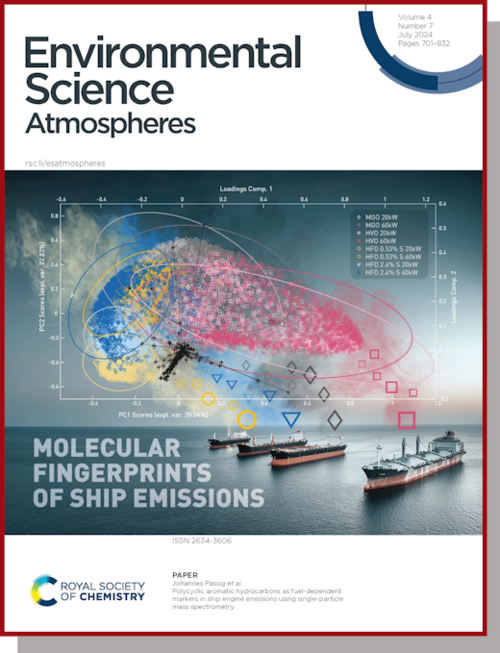A research team involving the University of Rostock and researchers from the SFB 1477 LiMatI has developed an innovative method to identify ship fuels from several kilometers away by analyzing polycyclic aromatic hydrocarbons (PAHs) in the air.
This technique enables a new form of monitoring and attribution of air pollution sources in the maritime sector. Polycyclic aromatic hydrocarbons (PAHs) are not only dangerous and carcinogenic environmental toxins but also possess special optical properties. PAHs can be particularly efficiently excited and ionized with laser light, for example, at the interfaces of the smallest air pollutant particles. At the University of Rostock, newly developed methods of single particle mass spectrometry (SPMS) utilize these resonant light-matter interactions to analyze the chemical composition of the particles. Their particularly high sensitivity and selectivity enable the identification of specific PAHs that can serve as markers for the combustion of various fuels. The study shows that the PAH patterns in the exhaust gases vary depending on the fuel used. Various relevant ship fuels such as marine gas oil, hydrogenated vegetable oil, and heavy fuel oil were examined. The PAH patterns allow a clear distinction between the different fuels. It is noteworthy that cheap heavy fuel oil is no longer permitted in most coastal sea areas as well as in the North and Baltic Seas to protect the environment and human health. This method thus offers a new possibility to monitor compliance with emission regulations from several kilometers away from land-based stations and to identify the source of air pollutants. Consequently, it can make an important contribution to the protection of the environment and human health in the future.
Original Publication: Johannes Passig et al., Polycyclic aromatic hydrocarbons as fuel-dependent markers in ship engine emissions using single-particle mass spectrometry, Environ. Sci.: Atmos.,2024,4, 708, DOI: 10.1039/D4EA00035H

